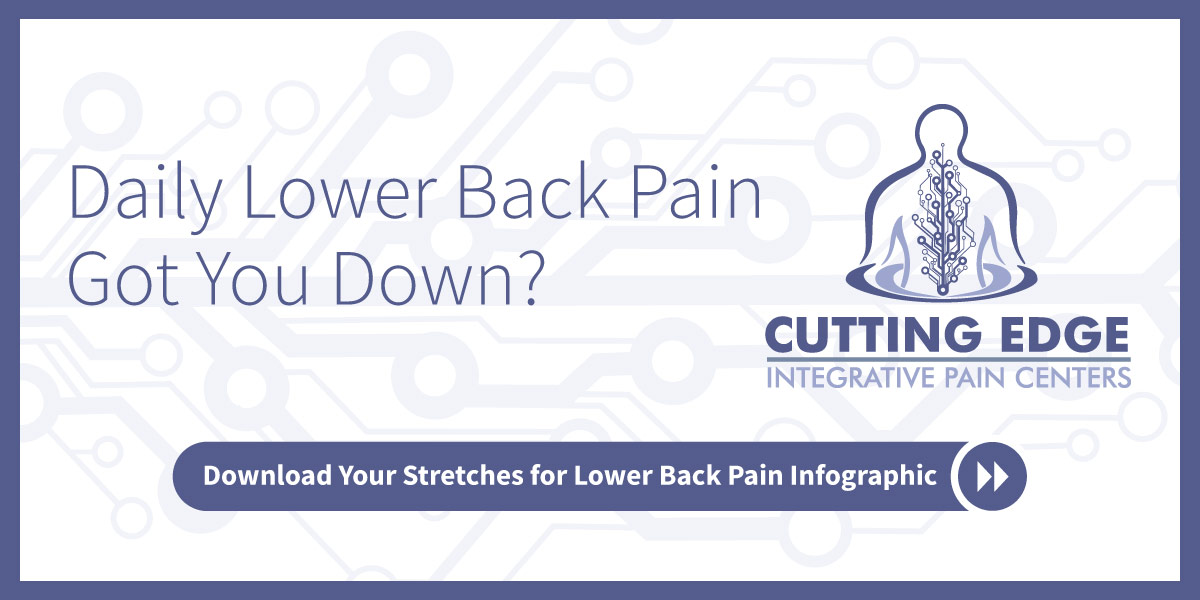Millions of people in the US live with chronic lower back pain, making it hard to enjoy life. If you suffer from chronic pain, you can go through the traditional methods of pain management like physical therapy and medications. However, these treatments still don’t achieve long-term treatment. This is because lower back pain often stems from the bones, or vertebrae, causing vertebrogenic pain. If you are experiencing lower back chronic pain, the Intracept Procedure is the key to relief.
Want to Learn the Causes of Back Pain? Click Here
What is Vertebrogenic Pain and What is the Cause?
1 in 6 people with chronic lower back pain experience vertebrogenic pain: a specific type of acute or chronic lower back pain that is caused by damage to the vertebral endplates. The end plates are located between the disc and the vertebral body. While the vertebral endplates are very small—about 0.1 to 2 millimeters (about 0.08 in) thick—they house many nerves. This makes endplates extremely susceptible to pain. Low-back pain originates from inside the vertebrae: from the nerve in the endplates to where the bones meet the discs in your spine.
When the endplates and the nerves are compressed, stress is applied to the endplates, which can lead to inflammation and vertebrogenic pain. This usually occurs when the discs in your spine gradually wear and tear over time. The pain can worsen with physical activity, prolonged sitting, bending forward, and lifting items.
Through treatments like anti-inflammatory medications and physical therapy, some patients can be helped, but these are not always effective for vertebrogenic pain. Fortunately, there is a minimally invasive procedure that is highly effective, called the Intracept Procedure.
Diagnosing Vertebrogenic Pain
Diagnosing vertebrogenic pain is challenging because it can be hard to pick up the subtle endplate damage through imaging. The best way to identify your pain as vertebrogenic is through an MRI, because it will show the Modic changes. Modic changes can indicate dysfunction in two ways:
- Bone marrow becomes inflamed and swells
- Bone marrow turns to fatty tissue as a result of reduced blood flow
How the Intracept is Key to Providing Relief for Vertebrogenic Pain
The Intracept Procedure uses radiofrequency to target specific nerves within the vertebrae, called the basivertebral nerve. This blocks the pain signals before they reach the endplates. By targeting these specific nerves, patients find relief without affecting other areas of the body and creating complications. Intracept provides the long-term relief of chronic lower back pain.
The Steps of the Intracept Procedure
1. Access the Pedicle
Patients will receive local anesthetic to numb the skin. Your pain management provider will use X-ray imaging to identify the right nerves. During the procedure, a small needle will be inserted into the pedicle area of your spine, the vertebrae that connects each pair of ribs to the spine.
2. Create the Channel
Once the needle is in place, a curved instrument is passed through the needle to create a small channel in the bone to deliver the radiofrequency to the nerves.
3. Place the RF probe
With the channel, a probe is placed in a position to deliver the radiofrequency energy to ablate the basivertebral nerves. The energy will heat the specific nerves to block pain signals before they can branch out and reach the brain.
Intracept Procedure for Pain Management
At Cutting Edge, we offer a variety of pain management treatments, including Intracept Procedure. We relieve chronic pain, including vertebrogenic pain. Intracept is a minimally invasive procedure that can help patients find relief from chronic lower back pain without affecting other areas of the body. If you are experiencing chronic lower back pain, reach out to us today for a consultation.


